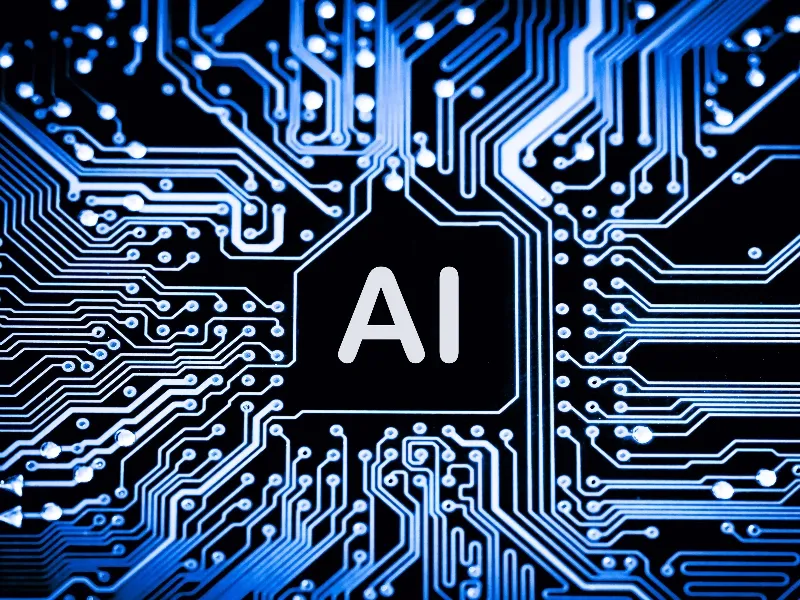Ethical AI Development: Building Responsible Systems for a Fairer Future
Date Published

Outlining Best Practices for Ethical AI, Focusing on Transparency, Accountability, and Fairness in Algorithm Design
As artificial intelligence (AI) continues to transform industries, the ethical implications of its development and deployment have come into sharp focus. With AI being used to make decisions that affect everything from job recruitment to healthcare, ensuring that these systems are built responsibly is essential to prevent harm, discrimination, or other unintended consequences. Ethical AI development is about creating AI systems that are transparent, accountable, and fair, allowing organizations to deploy these technologies in ways that benefit society while minimizing risks.
In this blog, we will explore the best practices for ethical AI development, including how to incorporate fairness, accountability, and transparency into the algorithm design process. We will also discuss the risks of failing to address ethical concerns and provide examples of how leading organizations are tackling these challenges.

Ethical AI development ensures fairness, transparency, and accountability in the design and deployment of AI systems.
The Importance of Ethical AI Development
Ethical AI development involves designing and deploying AI systems that uphold societal values such as fairness, transparency, and accountability. As AI becomes more embedded in critical decision-making processes, from hiring decisions to medical diagnoses, the ethical implications of biased algorithms, opaque models, and unaccountable systems are becoming more pronounced.
For example: AI used in criminal justice systems to predict recidivism rates has been shown to disproportionately disadvantage minority groups due to biased training data. Without ethical considerations in design, these biases can perpetuate inequality and discrimination.
Addressing ethical concerns is not only a moral imperative but also a practical one. As regulatory bodies introduce AI governance frameworks and public awareness of AI ethics grows, organizations that fail to prioritize responsible AI development risk legal consequences, reputational damage, and loss of consumer trust.
Key Pillars of Ethical AI Development
To ensure AI systems are ethically sound, organizations must focus on three key pillars: fairness, transparency, and accountability. Let's explore each of these in detail.
1. Fairness in Algorithm Design
Fairness in AI refers to ensuring that algorithms do not discriminate against individuals or groups based on attributes such as race, gender, or socioeconomic status. Bias in AI often arises from the data used to train models, which can reflect historical inequalities and societal prejudices.
One way to mitigate bias is by using diverse and representative training data. This reduces the risk of the AI system learning biased patterns and making unfair decisions. Additionally, fairness metrics should be built into the system to detect and address any biases that emerge during deployment.
Example: In the hiring industry, AI tools used to screen job candidates can inadvertently favor certain demographics if trained on biased historical data. To counteract this, companies can use fairness tools like IBM’s AI Fairness 360 to identify and correct biases during model development.
2. Transparency in AI Systems
Transparency in AI is about making AI systems understandable and explainable to both users and stakeholders. Many AI systems, particularly those based on machine learning, operate as "black boxes," meaning their decision-making processes are difficult to interpret. This lack of transparency can erode trust, especially in high-stakes applications like healthcare, finance, and criminal justice.
To address this, developers should implement explainable AI (XAI) techniques that provide insights into how an AI system makes its decisions. These techniques allow users to understand the factors driving AI recommendations, making it easier to challenge or validate outcomes.
Case Study: Google’s AI principles include a commitment to transparency, ensuring that AI systems provide explanations that are clear and understandable. This has been applied to Google’s AI tools in healthcare, where explainability is crucial for doctors who rely on AI to assist with diagnoses.

Explainable AI techniques help increase transparency and build trust in AI systems by making decisions interpretable.
3. Accountability in AI Deployment
Accountability in AI development ensures that there is a clear chain of responsibility for the design, deployment, and outcomes of AI systems. Without accountability, it becomes difficult to address failures, such as biased decisions or harmful impacts on individuals.
Organizations should establish governance structures that oversee AI projects from inception to deployment. This includes setting up AI ethics boards or appointing Chief AI Officers who are responsible for ensuring the ethical integrity of AI systems. Accountability also involves conducting regular audits of AI systems to ensure they comply with ethical standards and regulatory requirements.
Example: Microsoft has created an AI ethics board to review its AI projects and ensure they align with ethical guidelines. This board provides oversight and ensures that AI systems are built responsibly, with attention to potential risks and harms.
Challenges in Building Ethical AI Systems
Despite the best efforts to design ethical AI systems, challenges remain. One of the biggest obstacles is the trade-off between AI accuracy and fairness. In some cases, improving fairness in an AI model may reduce its overall accuracy, leading to difficult decisions about which ethical values to prioritize.
Another challenge is the global nature of AI regulation. Different regions have varying approaches to AI governance, making it difficult for organizations operating across borders to comply with all relevant ethical and legal standards. Additionally, the rapid pace of AI development often outstrips the creation of regulatory frameworks, leaving companies to navigate complex and evolving landscapes on their own.
Best Practices for Ethical AI Development
To overcome these challenges and build responsible AI systems, organizations can follow these best practices:
1. Incorporate Ethics by Design
Ethical considerations should be integrated into every stage of the AI development process, from data collection to model deployment. This involves identifying potential ethical risks early on and designing systems that prioritize fairness, transparency, and accountability from the start.
2. Use Fairness and Bias Detection Tools
Fairness and bias detection tools, such as IBM’s AI Fairness 360 or Microsoft’s Fairlearn, can help developers assess their AI systems for bias. These tools provide metrics and methods to identify where and how bias may exist in data or algorithms, allowing for corrective actions to be taken.
3. Foster a Culture of Accountability
Organizations should foster a culture of accountability where teams are encouraged to raise ethical concerns and take responsibility for the AI systems they develop. This includes providing ethics training for AI developers and establishing internal review processes for AI projects.

Incorporating fairness and bias detection tools into AI development ensures ethical outcomes in decision-making processes.
The Future of Ethical AI Development
As AI technologies continue to advance, the need for ethical AI development will become even more pressing. In the future, we can expect to see more regulatory frameworks, increased public scrutiny, and a greater demand for AI systems that are transparent, fair, and accountable. Organizations that lead the way in ethical AI development will be better positioned to build trust with their customers, avoid legal pitfalls, and create systems that have a positive societal impact.
By prioritizing fairness, transparency, and accountability, organizations can ensure that their AI systems contribute to a fairer, more equitable future.
At Dotnitron Technologies, we are committed to developing AI systems that adhere to the highest ethical standards. Our AI solutions are designed with fairness, transparency, and accountability in mind, ensuring that our clients can harness the power of AI responsibly and ethically.
